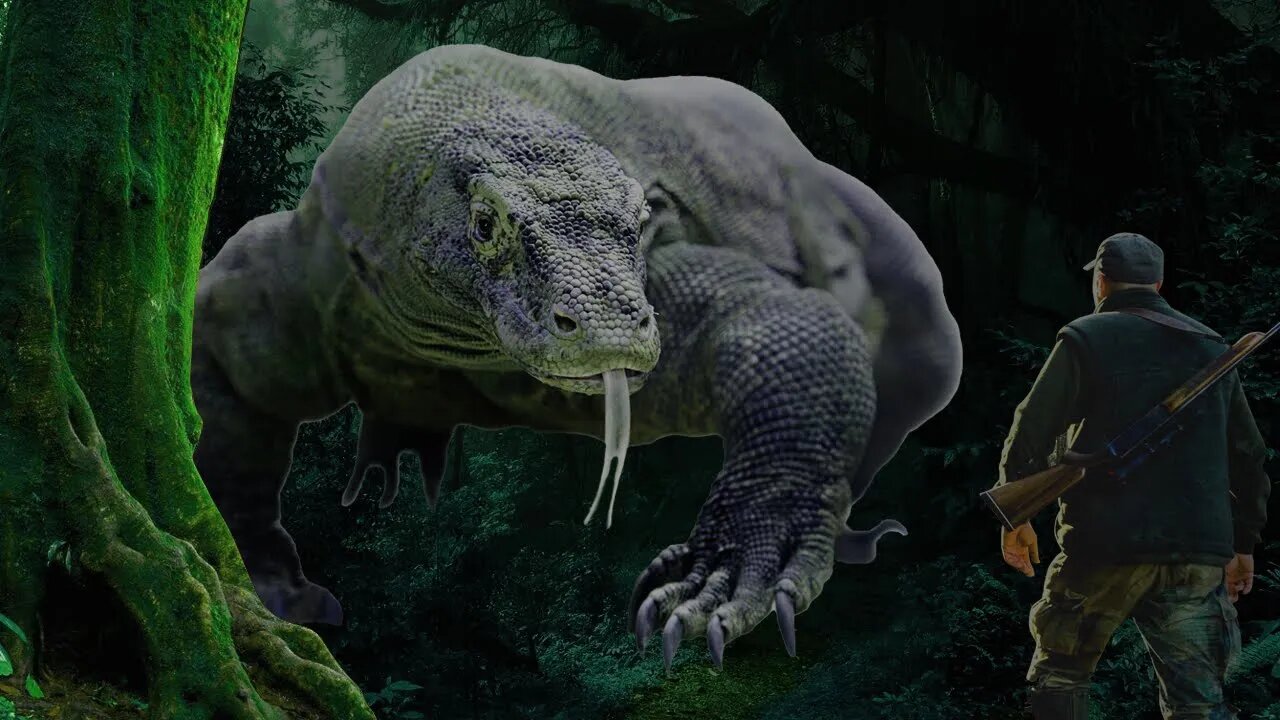Premium Only Content

Komodo Dragon Chronicles: Wildlife's Majestic Beast
Komodo Dragon Chronicles: Wildlife's Majestic Beast
Komodo dragons are large lizards with long tails, strong and agile necks, and strong limbs. Their tongue is yellow and barbed. Adults are almost uniformly stone colored with distinct, larger scales. The Komodo's jaw and throat muscles allow it to swallow large pieces of meat with astonishing speed. Several movable joints, such as the intramandibular hinge, open the lower jaw unusually wide. The stomach expands easily, allowing an adult to consume up to 80 percent of its body weight in a single meal. When threatened, Komodos may expel their stomach contents to reduce their weight in order to escape. However males are larger and heavier than females.
Komodo dragons eat almost any type of meat, scavenging carcasses or chasing down animals ranging in size from small rodents to large water buffalo. The young eat mainly small lizards and insects as well as snakes and birds. If they survive to age 5, they move on to larger prey, such as monkeys, goats, wild boars and deer. These reptiles are tertiary predators at the top of their food chain and are also cannibals.
Although the Komodo dragon can reach speeds of 10 to 13 mph for short periods of time, its hunting strategy is based on stealth and strength. It may spend hours in one spot on a playing field – waiting for a deer or other large and nutritious prey to come its way before launching an attack.
Most attempts by monitors to capture prey are unsuccessful. If it is able to bite its prey, the bacteria and poison in its saliva will kill the prey within a few days. After the animal dies, which can take up to four days, the Komodo uses its powerful sense of smell to locate the body.
Monitors can see objects up to 985 feet away. They may be able to distinguish colors but have poor vision in low light. Their hearing is much worse than humans and they cannot hear soft sounds or loud screams.
It uses its long yellow, forked tongue to sample the air.
This lizard's large, curved and serrated teeth are its most lethal weapons, tearing through flesh with efficiency. The tooth's teeth contain bits of meat from its most recent meal, and this protein-rich remains support large numbers of bacteria. Researchers have also documented a venom gland in the dragon's lower jaw.
Scientists are searching for antibodies in the Komodo dragon's blood that may be responsible.
Komodo dragons are efficient eaters, leaving behind only about 12 percent of their prey. They also eat bones, hooves and parts of hides as well as intestines.
At the Smithsonian National Zoo, Komodo dragons eat rodents, chicks, rabbits, and sometimes fish and beef carcasses.
#KomodoDragon #Wildlife #NatureDocumentary #AnimalFacts #EndangeredSpecies #Predators #Reptiles #WildlifeConservation #NatureDiscovery #IndonesianWildlife #JungleAdventures #AnimalBehavior #NaturePhotography #RareSpecies #ExoticAnimals
-
 10:17
10:17
Dermatologist Dr. Dustin Portela
1 day ago $5.04 earnedOlay Cleansing Melts: Dermatologist's Honest Review
36.4K -
 1:02:20
1:02:20
Trumpet Daily
1 day ago $18.39 earnedObama’s Fake World Comes Crashing Down - Trumpet Daily | Dec. 20, 2024
21.8K23 -
 6:29
6:29
BIG NEM
20 hours agoCultivating God Mode: Ancient Taoist NoFap Practices
17.4K6 -
 30:53
30:53
Uncommon Sense In Current Times
1 day ago $2.93 earned"Pardon or Peril? How Biden’s Clemency Actions Could Backfire"
26.9K2 -
 40:01
40:01
CarlCrusher
18 hours agoSkinwalker Encounters in the Haunted Canyons of Magic Mesa - ep 4
31.1K2 -
 59:44
59:44
PMG
1 day ago $3.32 earned"BETRAYAL - Johnson's New Spending Bill EXPANDS COVID Plandemic Powers"
43.9K14 -
 6:48:50
6:48:50
Akademiks
16 hours agoKendrick Lamar and SZA disses Drake and BIG AK? HOLD UP! Diddy, Durk, JayZ update. Travis Hunter RUN
166K28 -
 11:45:14
11:45:14
Right Side Broadcasting Network
9 days agoLIVE REPLAY: TPUSA's America Fest Conference: Day Three - 12/21/24
350K28 -
 12:19
12:19
Tundra Tactical
16 hours ago $12.92 earnedDaniel Penny Beats Charges in NYC Subway Killing
69K13 -
 29:53
29:53
MYLUNCHBREAK CHANNEL PAGE
1 day agoUnder The Necropolis - Pt 1
158K52